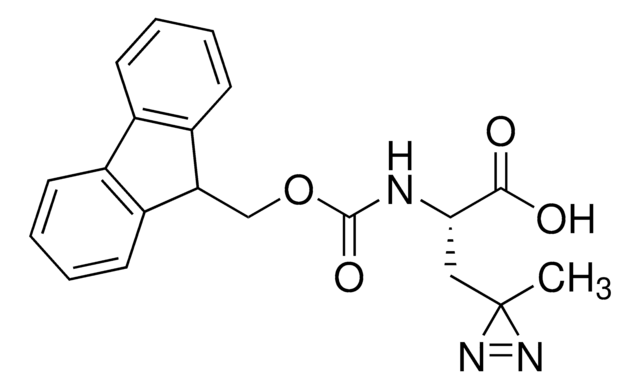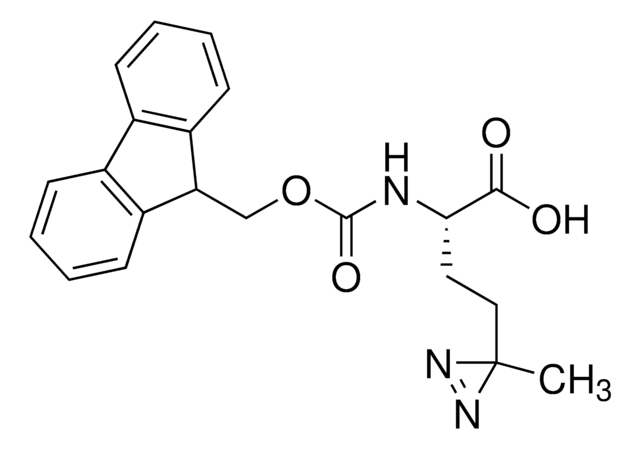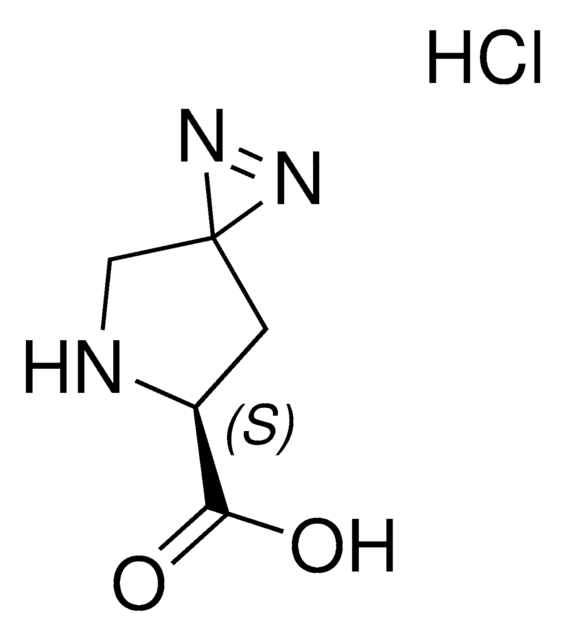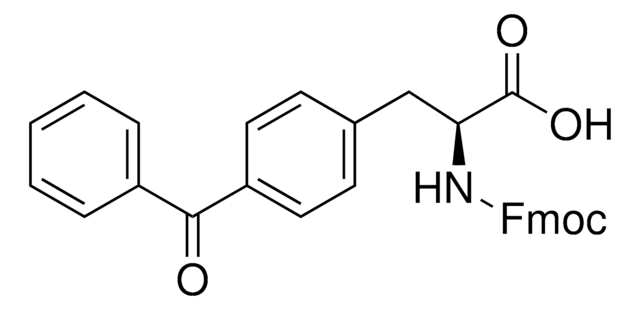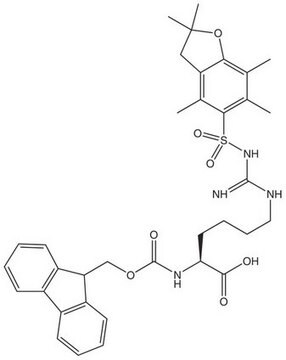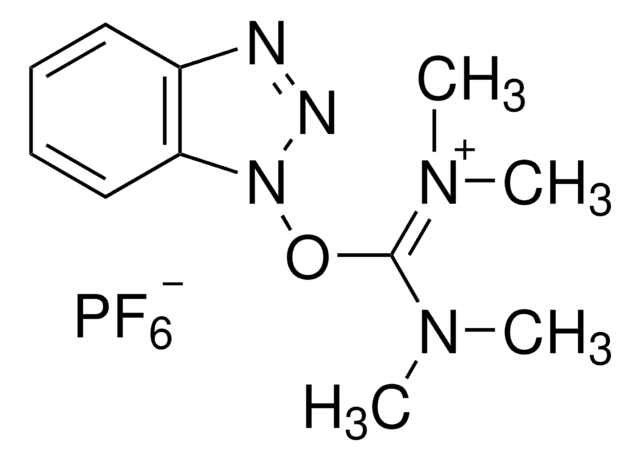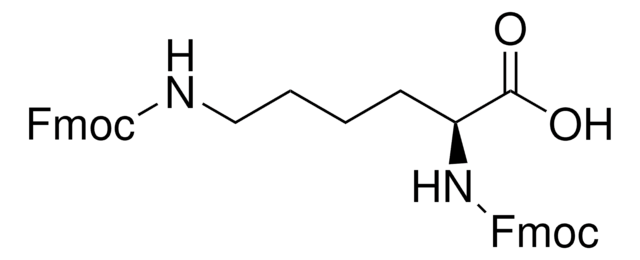907294
Fmoc-L-Photo-Phe-OH
≥95%
Sinónimos:
(S)-2-((((9H-Fluoren-9-yl)methoxy)carbonyl)amino)-3-(4-(3-(trifluoromethyl)-3H-diazirin-3-yl)phenyl)propanoic acid, N-α-(9-Fluorenylmethyloxycarbonyl)-4-(trifluoromethyldiazirin)-L-phenylalanine, Diazirine amino acid, Fmoc-Tdf-OH, Photo-Phe, Photo-crosslinking amino acid, Photoprobe building block
About This Item
Productos recomendados
Ensayo
≥95%
Formulario
powder
idoneidad de la reacción
reaction type: Fmoc solid-phase peptide synthesis
aplicaciones
peptide synthesis
grupo funcional
Fmoc
temp. de almacenamiento
−20°C
cadena SMILES
FC(F)(F)C5(N=N5)c1ccc(cc1)C[C@H](NC(=O)OCC2c3c(cccc3)c4c2cccc4)C(=O)O
InChI
1S/C26H20F3N3O4/c27-26(28,29)25(31-32-25)16-11-9-15(10-12-16)13-22(23(33)34)30-24(35)36-14-21-19-7-3-1-5-17(19)18-6-2-4-8-20(18)21/h1-12,21-22H,13-14H2,(H,30,35)(H,33,34)/t22-/m0/s1
Clave InChI
UHXIAQUVGJCYSA-QFIPXVFZSA-N
Categorías relacionadas
Aplicación
Product can be used with our line of photoreactors: Including Penn PhD (Z744035) & SynLED 2.0 (Z744080)
Otras notas
Mode of Action of cGMP-dependent Protein Kinase-specific Inhibitors Probed by Photoaffinity Cross-linking Mass Spectrometry
Trifluoromethyldiazirine: an effective photo-induced cross-linking probe for exploring amyloid formation
Simple and Versatile Method for Tagging Phenyldiazirine Photophores
Fishing for Drug Targets: A Focus on Diazirine Photoaffinity Probe Synthesis
Photo-affinity labeling (PAL) in chemical proteomics: a handy tool to investigate protein-protein interactions (PPIs)
Producto relacionado
Código de clase de almacenamiento
11 - Combustible Solids
Clase de riesgo para el agua (WGK)
WGK 3
Elija entre una de las versiones más recientes:
Certificados de análisis (COA)
It looks like we've run into a problem, but you can still download Certificates of Analysis from our Documentos section.
Si necesita más asistencia, póngase en contacto con Atención al cliente
¿Ya tiene este producto?
Encuentre la documentación para los productos que ha comprado recientemente en la Biblioteca de documentos.
Global Trade Item Number
| Número de referencia del producto (SKU) | GTIN |
|---|---|
| 907294-50MG | 4022536043357 |
Nuestro equipo de científicos tiene experiencia en todas las áreas de investigación: Ciencias de la vida, Ciencia de los materiales, Síntesis química, Cromatografía, Analítica y muchas otras.
Póngase en contacto con el Servicio técnico